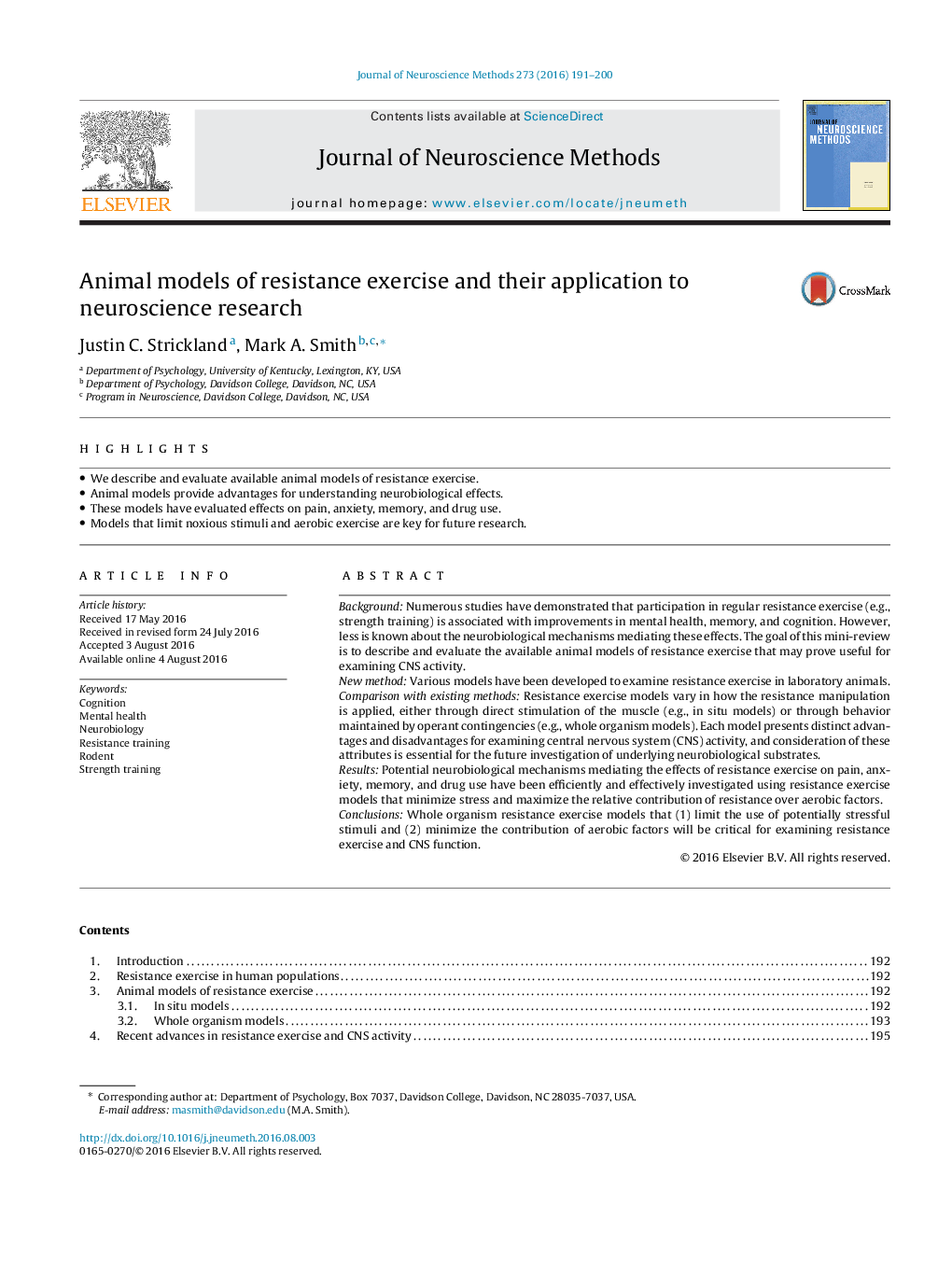| Article ID | Journal | Published Year | Pages | File Type |
|---|---|---|---|---|
| 6267622 | Journal of Neuroscience Methods | 2016 | 10 Pages |
â¢We describe and evaluate available animal models of resistance exercise.â¢Animal models provide advantages for understanding neurobiological effects.â¢These models have evaluated effects on pain, anxiety, memory, and drug use.â¢Models that limit noxious stimuli and aerobic exercise are key for future research.
BackgroundNumerous studies have demonstrated that participation in regular resistance exercise (e.g., strength training) is associated with improvements in mental health, memory, and cognition. However, less is known about the neurobiological mechanisms mediating these effects. The goal of this mini-review is to describe and evaluate the available animal models of resistance exercise that may prove useful for examining CNS activity.New methodVarious models have been developed to examine resistance exercise in laboratory animals.Comparison with existing methodsResistance exercise models vary in how the resistance manipulation is applied, either through direct stimulation of the muscle (e.g., in situ models) or through behavior maintained by operant contingencies (e.g., whole organism models). Each model presents distinct advantages and disadvantages for examining central nervous system (CNS) activity, and consideration of these attributes is essential for the future investigation of underlying neurobiological substrates.ResultsPotential neurobiological mechanisms mediating the effects of resistance exercise on pain, anxiety, memory, and drug use have been efficiently and effectively investigated using resistance exercise models that minimize stress and maximize the relative contribution of resistance over aerobic factors.ConclusionsWhole organism resistance exercise models that (1) limit the use of potentially stressful stimuli and (2) minimize the contribution of aerobic factors will be critical for examining resistance exercise and CNS function.
